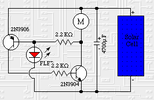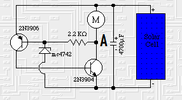Lucky-Luka
Member
Hi all
Looking into BEAM circuits I have seen the use of the FLEDs (flashing LEDs).
Are they different from common LEDs and why should I use them?
Can I buy them somewhere nowadays or could I use something else?
Thanks
Looking into BEAM circuits I have seen the use of the FLEDs (flashing LEDs).
Are they different from common LEDs and why should I use them?
Can I buy them somewhere nowadays or could I use something else?
Thanks




